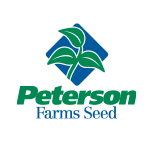Seed Treatment: Addressing the Issues
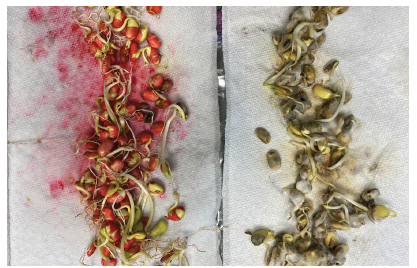
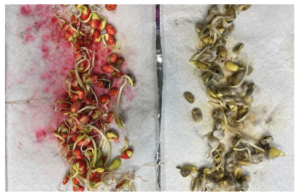
Our seed treatment is very effective in increasing the germination rate of seed infected with seed decay diseases like Phomopsis.
In the past we have talked about the benefits of using a quality seed treatment on your soybeans. Seed treatments are a cost-effective investment to protect your seed from the many pests and diseases like Pythium, Phytophthora and Rhizoctonia. These fungi are present in our soils, especially in our cooler northern region.
We developed our Peterson Select seed treatment with four active ingredients to address the diseases we face in our region. With the addition of insecticide, Peterson Select Plus helps to protect against below-and-above-ground insects like bean leaf beetle, wireworm, seed corn maggot and aphids. Many seed treatments in the market have just 2-3 active ingredients that are developed to address broad issues of the entire Midwest.
White mold, sudden death syndrome (SDS) and soybean cyst nematode (SCN) are other issues in our region. The first and most effective line of defense is to choose soybean varieties that have high scores for these individual problems. For added protection we have developed a few new seed treatment add-ons to address these issues directly.
White mold
White mold, also known as Sclerotinia stem rot, is a fungal disease caused by Sclerotinia sclerotiorum. It can significantly impact soybean yield, especially in cool, wet and humid environments. The disease thrives in dense canopies with limited airflow, creating ideal conditions for fungal growth.
To address white mold, our formulation adds a biological seed treatment called Heads Up to Peterson Select or Peterson Select Plus. Heads Up works by triggering the plant’s natural defense mechanisms, enhancing its ability to resist infection. This preemptive approach reduces disease pressure during critical growth stages.
Sudden Death Syndrome
SDS is a fungal disease caused by Fusarium virguliforme and it infects the roots early in the growing season, mostly by wet cool soils. Symptoms typically appear later in the season such as yellowing and browning between the leaf veins, defoliation and reduced pod fill. SDS can significantly reduce yields, especially in fields with Soybean Cyst Nematode (SCN), which exacerbates the disease.
Heads Up is also effective against SDS under the same plant defense mechanism. Our Peterson Select SDS blend again adds Heads Up, plus increases the rate of the active ingredient thiamethoxam by 4X the normal rate. With these two changes, we can significantly reduce the effect of SDS symptoms and yield loss.
Soybean Cyst Nematode
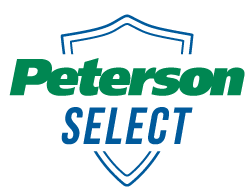
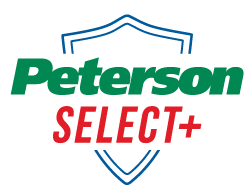
SCN is another huge yield-robbing issue. SCN is a microscopic roundworm and one of the most damaging pests for soybeans. SCN invades the roots, disrupting nutrient and water uptake and weakening the plant. Symptoms include stunted growth, yellowing and reduced yields, though infestations are often unnoticed until severe.
Our Peterson Select Plus Nematicide uses a product called BioST Nematicide, a broad spectrum biological nematicide. BioST Nematicide destroys nematodes, eggs and juveniles within 24-48 hours of contact and stays in the rootzone for up to 75 days.
Investing in high-quality seed treatments tailored to regional challenges is a critical step in maximizing soybean yield potential. Peterson Select and Peterson Select Plus, along with targeted addons like Heads Up and BioST Nematicide, offer protection against the unique pests and diseases in our northern region.
By addressing issues like white mold, SDS and SCN, these treatments not only safeguard your crop but also ensure long-term productivity and profitability. As conditions continue to evolve, we will continue to look for new and effective seed treatments to stay ahead of emerging threats.
